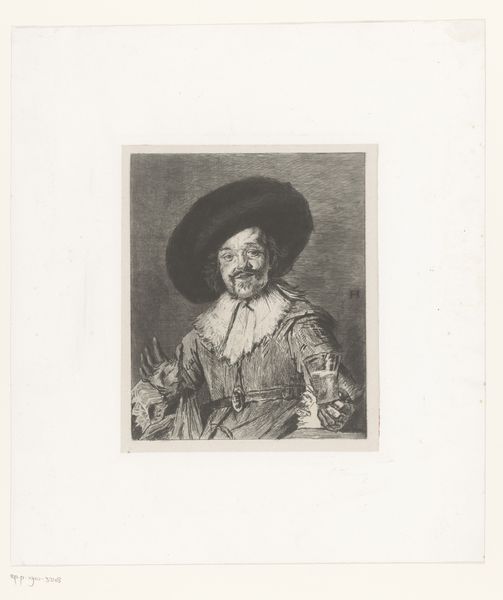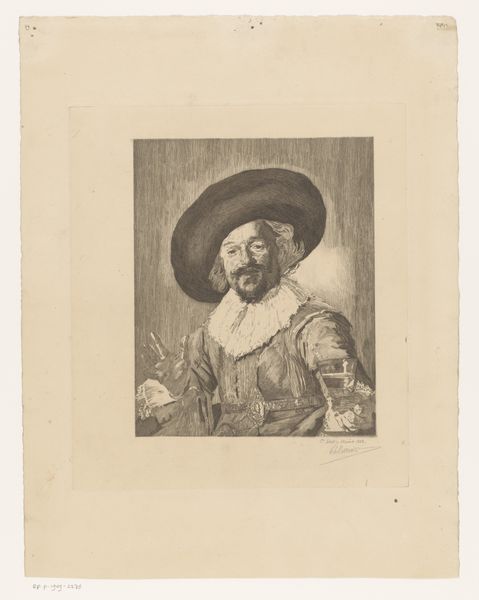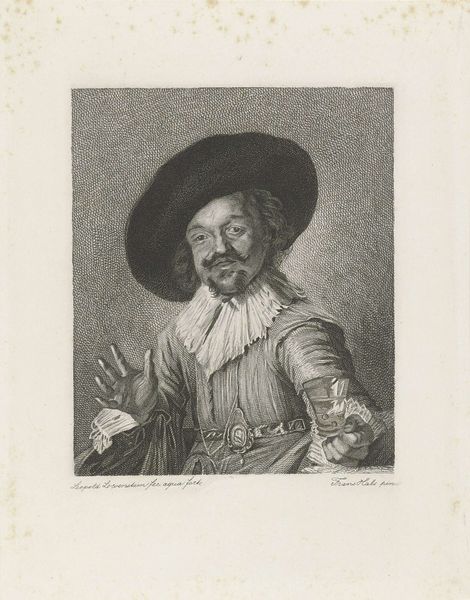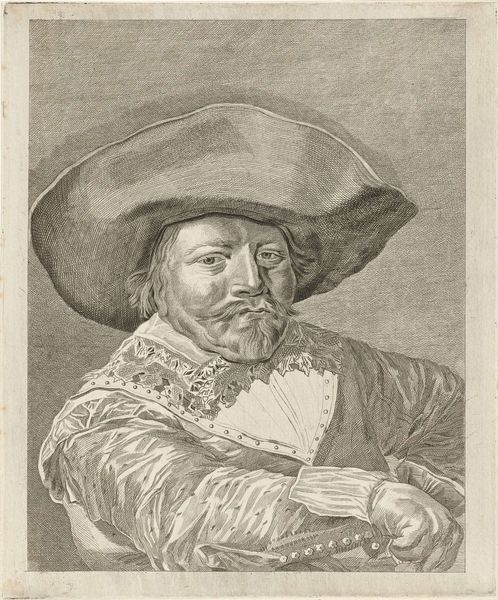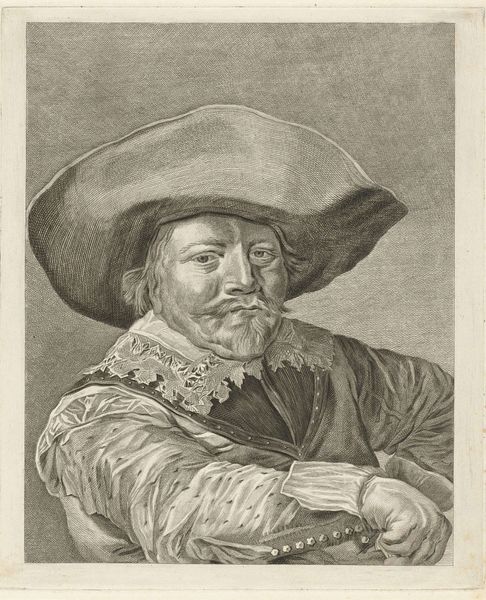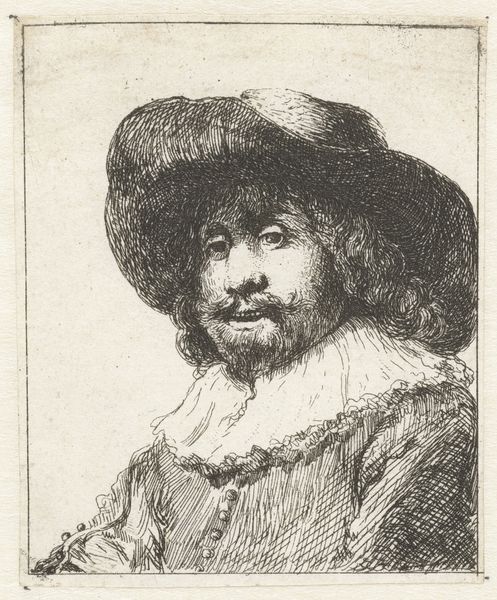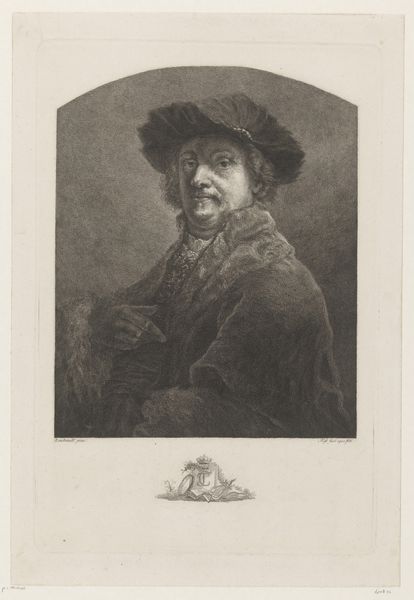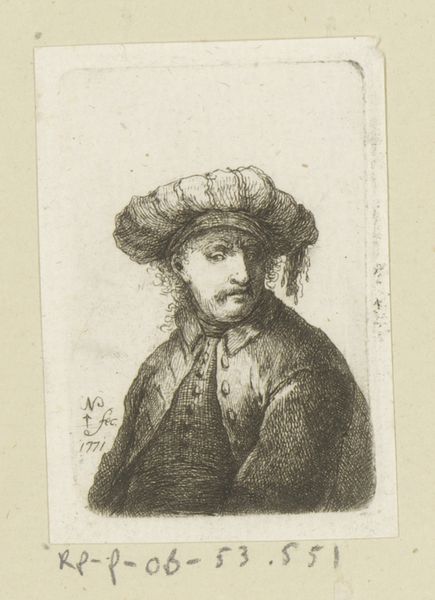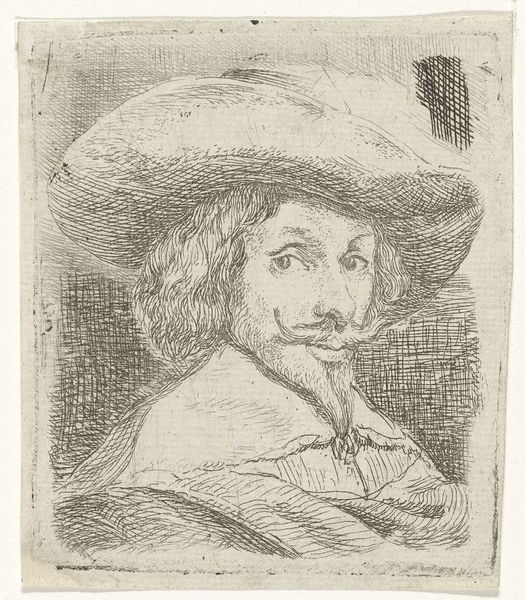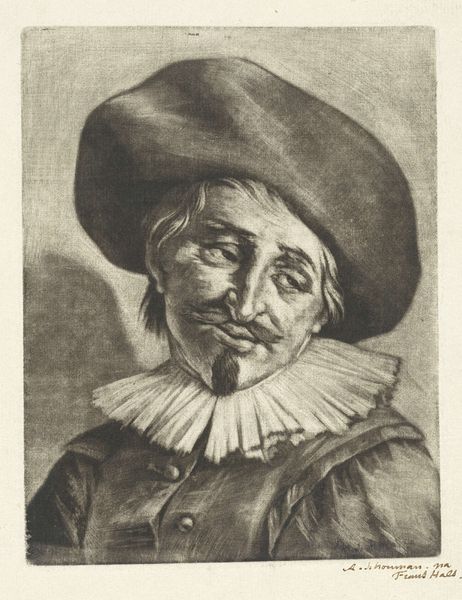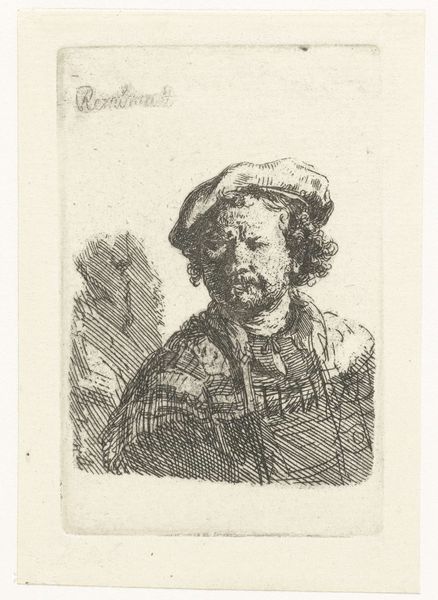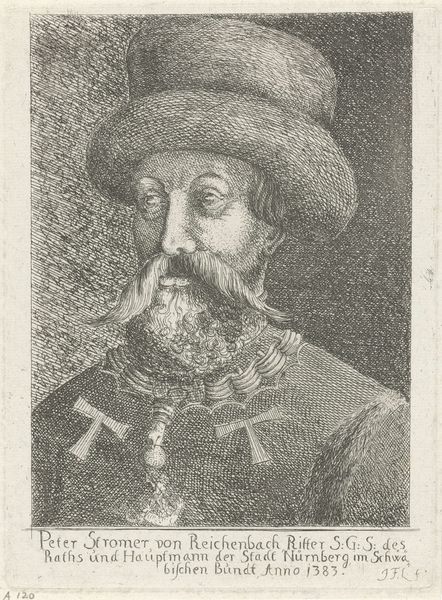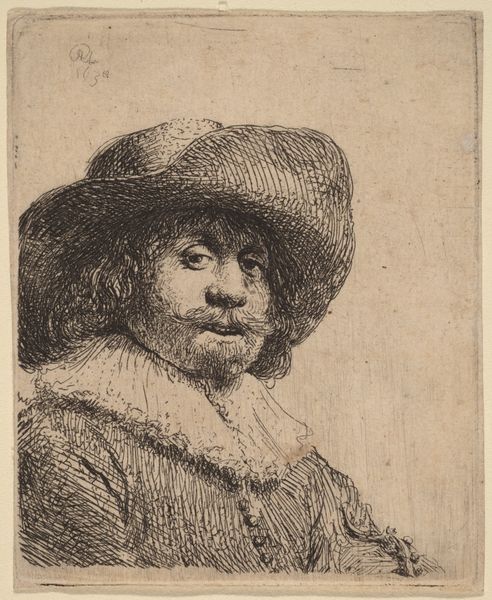
print, etching
#
portrait
#
dutch-golden-age
# print
#
etching
#
genre-painting
Dimensions: height 213 mm, width 163 mm
Copyright: Rijks Museum: Open Domain
Editor: So, we have "The Merry Drinker" by Johannes Arnoldus Boland, made around 1875 as an etching. It’s so finely detailed, the texture seems to pop. What really strikes me is the process – the deliberate act of creating this print and how that contrasts with the subject’s… levity? What do you see in this piece? Curator: Well, given the materiality of an etching, its inherently reproductive nature begs us to consider distribution and audience. We're seeing a genre painting reimagined in print form. Was this to democratize art viewing or capitalize on popular imagery for profit? Who consumed this and how? Editor: That's interesting. It being a print makes me wonder if the original context and intent shifts, especially considering the title evokes "genre-painting." What kind of labor was involved in producing such prints back then? Curator: A great question. Think about the specialized labor involved – from the artist who designed the image, to the skilled engraver who transferred it to the plate, and finally, the printer producing potentially hundreds of copies. This is a whole industry churning out images, mediating taste and accessibility to art for a burgeoning middle class. Does understanding that productive landscape alter how we look at the “merry drinker?” Editor: It definitely changes it. It makes me think about the relationship between fine art and reproduction, how things get circulated, commodified and their meaning, and our consumption of them gets altered over time. This was enlightening. Curator: Absolutely. And that exploration highlights that the making and circulation, rather than the supposed inherent essence, creates artistic and cultural value.
Comments
No comments
Be the first to comment and join the conversation on the ultimate creative platform.
